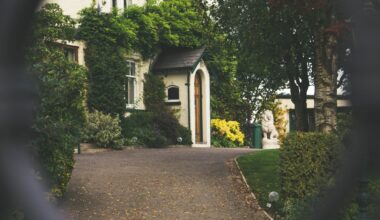Like many other kinds of insurance, homeowners insurance offers protection against unexpected disasters. By paying a small amount of money each month, you’ll protect your most expensive asset against fire, tornadoes, hailstorms, or other unforeseen circumstances.
However, it’s incorrect to assume that a homeowners insurance policy covers every disaster that could befall your home. It could spell financial disaster to assume that you’re covered for hurricane damage when your bare-bones policy only reimburses for the basics.
In this article, you’ll learn what a basic homeowners insurance policy encompasses, when you should purchase additional coverage, and how to file an insurance claim.
How Much Homeowners Insurance Do I Need?
After going through the homebuying process, it’s normal to feel overwhelmed by all of the moving parts involved in homeownership. As you begin to decide how much homeowners insurance you need, there are a few things you should consider. Policies will differ from home to home, and even from person to person, as a variety of factors go into the insurance company’s risk assessment of your property.
Cash Value Policy vs. Replacement Cost Policy
A cash value policy will replace your home or the damaged parts of your home based on how much it’s worth today minus your home’s depreciation. On average, this means that a cash value policy will replace your home at 80-90% of its original value, and that number could be dramatically different if your home has significantly appreciated recently. A cash value policy is a good option if your home is new, if you’re trying to save money on premiums, or if you don’t have a lot of possessions.
A replacement cost policy will compensate you for damages based on current market value. Because of its higher premiums, many homeowners may opt for a cash value policy instead. However, if you have a large household, an older home, or you carry debt, a replacement cost policy protects your assets if you need to rebuild your home after a complete catastrophe.
Other Price Factors
Since insurance policies are based on the calculation of risk, other circumstances or property features around your home may drive up the price of your homeowners insurance policy. The following items are just a few of the risk factors that can affect how expensive your insurance coverage is and how much you need. For an in-depth look at why these elements influence your policy, check out this article from Insurance.com.
- Age of Home
- Dogs
- Pools and Spas
- Age of Roof
- Location
- Materials of Home
- Local Natural Disasters
- Home Upgrades
- Trampolines & Woodstoves
What Does Homeowners Insurance Cover?
As you look over your homeowners insurance policy, there are some key phrases that you need to know so that you can understand what your policy covers.
Dwelling Structure – Insurance policies use the word “dwelling” to refer to the physical structure of a home, specifically the walls, roof, windows, foundation, and in-home appliances.
Personal Belongings – The contents of a home are referred to as personal belongings, and they are covered by your policy in specific instances. Because coverage is calculated on the average cost it takes to replace the contents of a home, it’s a great idea to take a home inventory so that you can include a specific list of personal belongings if you ever need to file a claim.
Liability Protection – This covers damage that someone who lives in your home causes to another person. It also includes the medical bills that a non-occupant receives if they’re injured on your property. Liability protection does not cover the damage that the occupants in your home may inflict on your walls, floors, or possessions.
Additional Living Expenses (ALE) – In the event of a disaster that forces you to leave your home, your homeowners insurance policy will pay for temporary housing while your home is being repaired. Some stipulations exist in your policy, including what kind of disaster is covered, what conditions make your home unlivable, and how much the insurance policy covers. For additional information on what ALE covers, see this breakdown from The Balance.
What Doesn’t Homeowners Insurance Cover?
Because of an unexpected cold snap, your pipes freeze and burst, causing damage not only to the pipes but your furniture and other belongings. Will your homeowners insurance cover your claim?
It depends.
Most insurance policies cover sudden and unexpected damage to your home, like bursting pipes. Damage that is caused by neglecting home maintenance or flooding, however, is usually not covered by a policy. If your pipes burst because you didn’t take the necessary precautions to protect your home from a cold snap, then the insurance company may choose not to cover your claim. Read the fine print on your policy so that you aren’t caught unprepared by a claim that is outside the scope of your coverage.
Generally, homeowners insurance doesn’t cover:
- Sewer backups
- Earthquakes
- Sinkholes
- Mold
- Volcanoes
- Floods
- Nuclear Disaster & War
What If You Live in a Disaster-Prone Area?
Tornadoes in Kansas, sinkholes in Florida, and earthquakes in California are all examples of region-specific disasters. Since insurance policies are written based on the possibility of a disaster, it makes sense that basic homeowners insurance policies don’t cover every single possible catastrophe. However, it’s not prudent to simply accept the basic policy, especially if you live in an area that is overdue for a massive earthquake or volcanic eruption. Talk to your insurance agent about purchasing a separate disaster-related policy.
Flood Coverage
A special word about flood coverage: The Federal Emergency Management Agency (FEMA) declares that flooding is the number one natural disaster in the country. If you live in a high-risk area and you have a federally-backed home loan, you will be required to purchase flood insurance. Even if you live in a low- to a moderate-risk flood zone, it may still be a good idea to purchase additional coverage.
How Do You File a Homeowners Insurance Claim?
When disaster strikes and it’s time to file a claim, you’ll need to take the following steps:
- If the damage occurred because of a crime, call the police and file a police report. Many insurance companies require a police report before they’ll move forward with the claim.
- Call your insurance agent and report the damage.
- Take pictures of the damage from as many angles as possible.
- If the damaged area will sustain further damage, make temporary repairs. For example, if it’s raining and there’s now a hole in your roof, temporarily patching it will prevent additional water damage.
- Allow insurance adjusters onto your property to assess the damage.
- Finally, pay your insurance deductible, and then use the claim check to repair the damage.
The Bottom Line
Nearly 6% of homeowners file at least one homeowners insurance claim in a given year and 60% of homes are underinsured. Protect your largest asset by making sure you have enough insurance to cover natural disasters, accidents, crime, and damage incurred on your property. Reach out to your insurance agent to talk about whether you have sufficient coverage to protect yourself from the unexpected.










